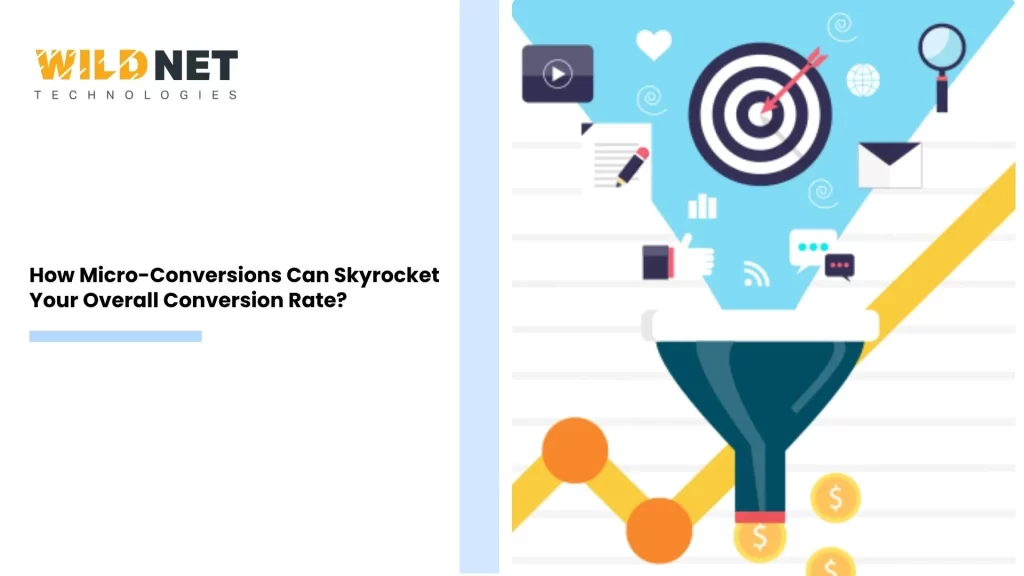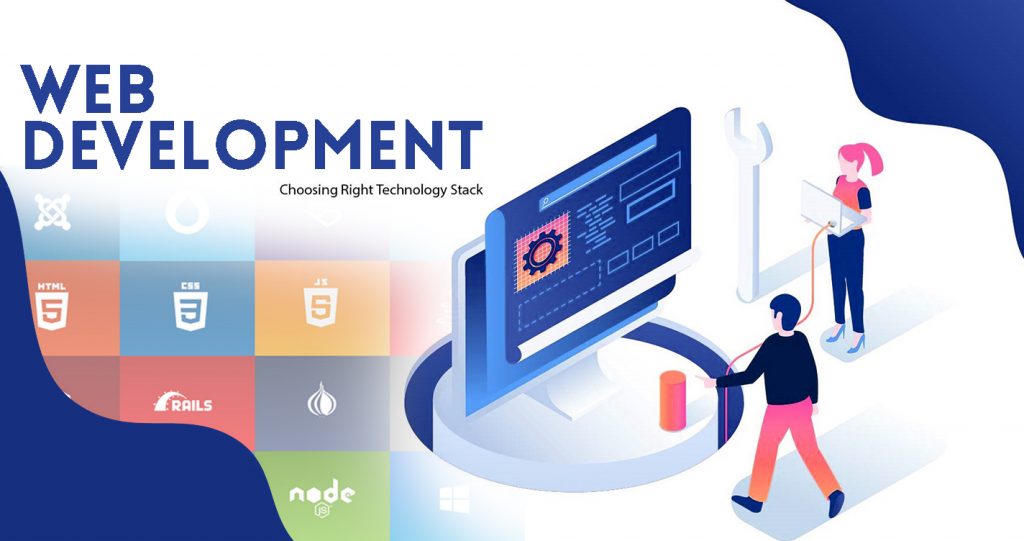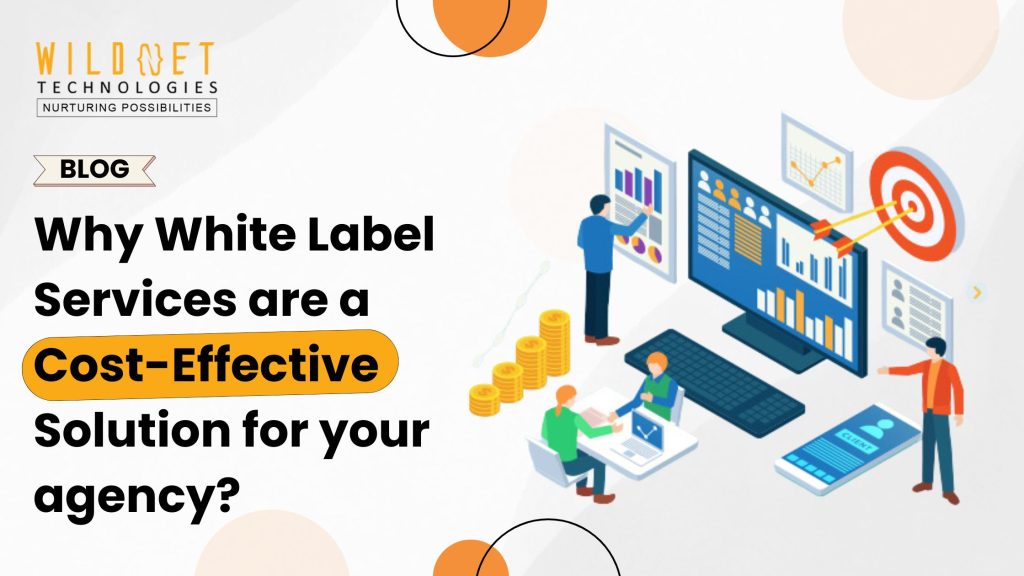Key Takeaways
- Micro-conversions are powerful signals you can optimize, automate around, and scale to drive macro success.
- Use AI to detect patterns, adapt experiences, and preempt buying intent in real time.
- Audit, implement, test, AI-enhance, re-optimize, and repeat.
Table of Contents
- Introduction
- What Are Micro‑Conversions?
- Micro vs. Macro Conversions
- Why Micro‑Conversions Matter
- Types of Micro‑Conversions
- Micro‑Conversions for Lead Generation
- What Type Of Company Would Find It Helpful To Track Micro Conversions?
- How to Track & Measure Micro‑Conversions
- 19 Proven Ways to Get More Micro‑Conversions
- Micro‑Conversions Fuel Smarter Paid Campaigns
- Psychology Behind the Power of Micro‑Steps
- Implementation Roadmap: Turning Theory into Results
- AI & SEO Enhancements for Micro-Conversions
- Top Tools & Templates to Accelerate Setup
- Conclusion
- FAQs
Introduction
Imagine this: you get 100,000 visitors monthly, but only 2–5% of them make a purchase or fill out a lead form, the so-called macro conversions. What about the remaining 95–98%? Those are potential customers who might be ready to engage, but only with smaller, less committal actions. These are known as micro‑conversions.
In this blog by our best AI digital marketing agency, we’ll explore:
- What are micro‑conversions
- Why are micro-conversions for lead generation
- How do they differ from macro conversions?
- Types of micro‑conversions
- How to track them
- Strategies to improve them, and yes, it will all show how micro‑conversions can skyrocket your overall conversion rate.
By focusing on these small wins such as newsletter signups, product video plays, adding to carts, you create a conversion funnel that feels gradual, natural, and achievable.
What Are Micro‑Conversions?
Micro‑conversions are the incremental steps users take toward completing a macro conversion (e.g., purchase or form fill). They signal intent and engagement (“mini yeses” that build momentum).
Examples include:
- Clicking CTA buttons or the hero search
- Viewing a product or category page
- Playing a demo/video
- Adding items to cart or wishlist
- Subscribing to newsletters or downloading guides
- Interacting with chat widgets or filters
- Scrolling or spending time on pages
These actions boil down to interest and intent: small behavioral indicators that show someone is warming up to your offer.
Micro vs. Macro Conversions
| Feature | Micro Conversions | Macro Conversions |
| Definition | Small, incremental actions | Final actions tied to revenue or core KPIs |
| Frequency | Common and frequent | Rare (2–5% of users) |
| Purpose | Signal intent, provide friction-data | Show actual conversion performance |
| Value | Insight into funnel performance | Drive revenue or goal completion |
| Typical Examples | Signup, video view, cart addition | Completed purchase, qualified lead |
“Time on page,” “scroll depth,” or “product video plays” like metrics may not directly generate revenue, but they illuminate the user journey and signal engagement trends.
Why Micro‑Conversions Matter
You can use micro-conversions for lead generation by studying the patterns. Here’s how it helps:
Reveal Behavioral Patterns
Micro‑conversions help you identify which funnel stages are working and where users drop off, insights you wouldn’t get by watching only macro conversions.
Reduce Friction and Boost Performance
Tracking small actions, like filter usage, chat clicks, “Add to Cart”, allows you to pinpoint UI issues and smooth out the user flow.
Build Trust Gradually
Every micro action like clicking, scrolling, & engaging, nudges customers closer to trust, familiarity, and eventually a purchase.
Enhance Paid Ads & Retargeting
When you capture signals like cart adds or guide downloads, you can feed these into Google Ads or social campaigns to optimize smart bidding, create precise retargeting groups, and scale effectively.
Types of Micro‑Conversions
Journey & Funnel Milestones
- Category or product page views
- Add-to-cart events
- Initiate checkout
- Chat click-throughs
These show forward progression, even before final conversion.
Engagement & Trust Signals
- Newsletter sign-ups
- Video plays
- Social media shares
- Account creations, guide downloads
These actions don’t directly link to revenue, but build familiarity and trust.
Paid‑media & Retargeting Touchpoints
- Price page or demo video views
- Ebook downloads from ads
- Significant time on page
These signals qualify users in ad platforms, improving ROI.
Micro‑Conversions for Lead Generation
In a context where macro conversions like form fills or demo requests are critical, micro‑conversions help soften the funnel and optimize performance.
Examples in Google Ads include:
- Video views
- Time spent on page
- Page scroll depth
- Chat interactions
- Downloading gated guides
These actions signal progressing interest, enable micro‑bidding, nurture drip leads, and help qualify traffic before asking for a heavy commitment.
What Type Of Company Would Find It Helpful To Track Micro Conversions?
Almost all online businesses can gain from micro‑conversion insights, but here are specific cases:
E‑Commerce Stores
Gain insight into browsing -> product interest -> cart -> checkout steps. Micro signals like product views, video plays, and cart adds are goldmines to reduce friction.
SaaS / Lead‑Gen Brands
Use video plays, ebook downloads, webinar registrations, and live chat taps to warm leads and debounce cold traffic.
Content / Media Sites
Metrics like scroll depth, time spent, and social shares provide insights into reader engagement and help monetize via subscriptions or ad impressions.
Low‑Traffic Businesses
Every interaction is precious, and each micro step offers immediate, actionable data to iterate and drive real gains, even from small audience sizes.
How to Track & Measure Micro‑Conversions
Define Meaningful Metrics
Choose 3-7 pivotal micro‑conversions based on your funnel, e.g., Add to Cart, Price Page View, Video Play, etc.
Set Up Event Tracking
Implement events using GA4, Google Tag Manager, or equivalent, each micro‑conversion should be tracked as a meaningful event.
Analyze Funnel Data
Check where users drop off. What micro step is leaking? Does product page conversion lag? Use heatmaps and session recordings too.
Assign Value for Paid Media
Associate event values with assets like “video watch” or “cart add” so ad platforms can optimize smartly.
Iterate via A/B Testing
Tweak headlines, button text, video placement, test interventions at micro conversion points to lift engagement a step at a time.
19 Proven Ways to Get More Micro‑Conversions
Here’s a condensed look of 19 specific micro‑conversion tactics that simultaneously uplift engagement and support macro goals:
- Search Bar Usage – Prominent site search, often tucked away, is a powerful trigger. Users engaging with search are highly active.
- Product Comparisons – Let users compare items side by side.
- Video Content – Embed product or demo videos; watching signifies interest.
- Email Sign‑Ups – Sidebars, popovers, timer-based offers.
- Wishlist or Save‑for‑Later – Low-commitment interests that build intent.
- Account Creation – Creates frictionless future interactions.
- Social Engagement – Shares or follows denote trust.
- Add-to-Cart – A micro-win en route to purchase.
- Initiate Checkout – Strong directional intent.
- Filters & Quick-View – Browsing enhancements signal exploration.
- Chat Interactions – Clicking chat shows active interest.
- Scroll Depth – Hit 50–75% of page = engagement flag.
- Time on Page – >2 min is a major trust indicator.
- Internal Navigation Clicks – User feeding through funnel.
- Guide or PDF Downloads – Lead-gen gold.
- Webinar Sign-ups – Highly committed micro-step.
- Retargeting Ad Clicks – Measures repeat interest.
- Heatmap Interactions – Hovering/clicking certain sections show friction.
- Abandoned Cart Triggers – Elicit action post-exit.
Micro‑Conversions Fuel Smarter Paid Campaigns
- Smart Bidding Signals: Google Ads and Meta Ad algorithms can optimize on micro signals (video views, cart adds) to reach scaled conversions.
- Retargeting Pools: Segment visitors who dropped out at specific micro‑steps, like browsing without adding, to tailor remarketing.
- Funnel-Layered Messaging: Use email or chat sequences nudging users to the next step, e.g., “You watched our product video, see similar items.”
Studies confirm such layered nurturing improves ROI compared to broad purchase-focused targeting.
Psychology Behind the Power of Micro‑Steps
These small signals are reinforced by cognitive theories:
- Foot-in-the-door phenomenon: small commitments increase the likelihood of larger buy-ins.
- Zero-price effect: “free” elements (shipping, downloads) hold outsized value.
- Fogg Behavior Model: Targeting ability and motivation—micro‑conversions lower ability threshold while preserving intent.
Linking Micro‑Wins to Revenue Growth
By improving micro‑steps:
- Cart additions, for instance, lift macro order rates.
- Enhanced product video interactions → higher purchase intent.
- Smoothed checkout micro‑steps, like free shipping or progress indicator, cut drop-off.
Implementation Roadmap: Turning Theory into Results
Follow this structured process to embed micro-conversion optimization into your CRO strategy:
Step 1: Audit & Map Your Funnel
- Use GA4, session recordings, heatmaps to list every point of engagement (scroll, video, cart adds) and identify gaps.
- Prioritize where micro-conversions align with your business goals (e.g. PDF downloads for SaaS, add-to-cart for e-comm).
Step 2: Pick Key Micro-Conversions
- Choose 3-7 high-impact actions like search usage, chat clicks, video plays, cart additions, newsletter sign-ups.
- Assign each event an estimated value proportional to the macro goal.
Step 3: Implement Tracking
- Set up GA4 or GTM events to capture clicks, scroll-depth, page views, and custom actions.
- Validate events using debugging tools.
Step 4: Analyze & Chart Your Funnel
- Use funnel reports in GA4 or Mixpanel to observe drop-off between micro actions.
- Apply heatmaps to uncover usability issues.
Step 5: Optimize & A/B Test
- Introduce changes tied explicitly to micro-conversions like better CTA texts/colors, repositioning search bar, exciting intent offers.
- Run A/B tests emphasizing uplift in micro steps, not just macro.
Step 6: Leverage AI & Personalization
- Implement AI-powered tools that dynamically adjust content, recommend products, or trigger chatbots based on micro signals.
- Example: AI-driven product recommendations after a demo video play.
Step 7: Automate Retargeting & Follow-up
- Segment users based on completed micro-conversions and trigger follow-up via ads, emails, or chat.
- Example: video-watchers receive a sequence guiding them to request a demo.
Step 8: Monitor & Refine
- Track micro-to-macro correlation: which micro signals drive actual goals? Adjust values accordingly.
- Evaluate ROI of interventions every month and iterate.
AI & SEO Enhancements for Micro-Conversions
2025 CRO trends show heavy use of AI and personalization. Here’s how to apply them:
Insights
- As per a report by McKinsey, personalization has helped brands attain 10-15% revenue lift.
- About 30% of companies will use AI in CRO for personalization, testing, and dynamic content by 2025.
- Chatbots improve engagement micro‑conversion rates by 27%.
Hyper-Personalization
- Dynamic content based on previous micro-actions: first-time visitors vs returning users .
- Predictive journey mapping: AI forecasts user intent and pre-empts actions with context-relevant prompts.
SEO & SGE Optimization
- Optimize content for conversational queries to engage early-stage micro‑conversions (FAQ, blog-to-ebook conversion flow).
- FAQ schema, chatbots, and SGE-friendly content boost scroll-depth and time-on-page micro conversions.
- Voice and mobile-first readiness enhances engagement in mid-funnel stages.
Top Tools & Templates to Accelerate Setup
| Category | Tool Examples | Use Case |
| Event Tracking & Analytics | GA4, Google Tag Manager, Mixpanel | Capture and visualize micro-conversions |
| Heatmap & Recording | Hotjar, Microsoft Clarity | Identify friction in user interactions |
| A/B Testing | VWO, Optimizely, Statsig | Optimize micro-level behaviors |
| AI Personalization | SuperAGI, Single Grain, Shopify AI tools | Recommend content or offers dynamically |
| Chatbots & Virtual Assistants | Drift, Intercom, Manychat | Trigger engagement via chat interactions |
| CRM & Automation | HubSpot, ActiveCampaign | Segment and retarget based on micro‑events |
Templates to use:
- Conversion Funnel Blueprint: detail every micro-conversion and input baseline metrics.
- A/B Test Planner: outline hypothesis, variations, target micro conversion metric, and test duration.
- Micro-to-Macro Attribution Dashboard: track micro → macro ratio over time.
Conclusion
Micro-conversions are no longer secondary metrics, they are central to modern CRO strategies. By capturing engagement signals (add-to-cart, video-plays, form interactions, etc.), mapping them systematically, optimizing them via testing and AI, and automating follow-up, you build a funnel that nurtures users through small “yeses” to big ones.
If you want to make sure your site becomes a funnel that no visitor can escape, connect with the best AI digital marketing agency, Wildnet Technologies. Our strategies are backed by 19+ years of strong foundation in the industry & highly skilled experts. From micro-conversions to skyrocketing your overall ROI, our tailored strategies are built to put you at the top of your game.
Ready to lead your industry? Let’s connect today.
FAQs
Q. What are micro‑conversions?
Ans. A micro-conversion is a small action a user takes that signals progression toward the main goal (macro conversion). Examples include clicking “add to cart,” signing up for a newsletter, downloading a guide, or playing a product video. These mini-actions demonstrate interest and intent.
Q. How is a micro‑conversion different from a macro conversion?
Ans. A micro-conversion is a step along the funnel, frequent and indicative of interest (e.g., watching a video or adding to cart). A macro-conversion is the ultimate goal, like making a purchase or submitting a lead form. While macros are fewer, micros happen consistently and help map the user journey.
Q. Why should I track micro‑conversions?
Ans. Tracking micro‑conversions helps you:
- Understand user behavior and segmentation;
- Diagnose where users drop off.
- Enhance A/B testing with more data points.
- Give stakeholders insights beyond final conversions.
Q. Which micro‑conversions matter most?
Ans. Focus on actions that are closely tied to your macro goal:
- Process milestones: add-to-cart, start checkout, pricing page visits;
- Engagement signals: newsletter sign-ups, demo video plays, downloads, social follows.
Q. How can micro‑conversion tracking improve the overall conversion rate?
Ans. By optimizing micro-steps, you:
- Remove friction points early.
- Build trust gradually.
- Feed better data into paid campaigns.
- Increase the likelihood of final conversions through compounding micro‑wins.
Q. How do I track micro‑conversions in Google Analytics 4?
Ans. In GA4:
- Define key micro‑actions (events).
- Set them up in GA4 using GTM or the admin panel.
- Monitor event occurrences and their correlation with macro-conversions.
Q. Can micro‑conversions help my Google Ads or smart bidding?
Ans. Yes! When macro conversions are too few for accurate smart bidding, tracking micro‑conversions like cart adds or video plays provides more signals. This helps Google’s algorithms optimize toward higher-value users.
Q. How many micro‑conversions should I track?
Ans. Choose a balanced set:
- 1–2 high-intent actions (e.g., “Add to Cart”);
- 1–2 low-friction engagement steps (e.g., newsletter sign-ups).
- This combo gives insights into both intent and broader engagement.
Q. What metrics can I derive from micro‑conversion tracking?
Ans. You can calculate:
- Micro-conversion rate = (micro‑conversions ÷ total visits) × 100;
- Micro→macro ratio = (total micro‑conversions ÷ total macro‑conversions) × 100.
- These highlight funnel strength and predictive value.
Q. Could optimizing micro‑conversions ever be counterproductive?
Ans. Yes, if you focus on micro‑actions that don’t lead to macro goals, you may boost irrelevant metrics. Always tie micro-objectives to macro business outcomes to avoid misleading results.






